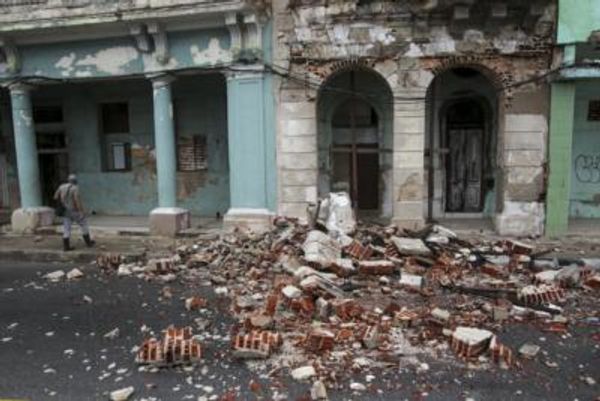
Last week, central parts of the US experienced a severe outbreak of tornadoes with more than two dozen forming across the states of Ohio and Indiana, resulting in at least three deaths and multiple injuries.
A number of intense supercell thunderstorms travelled eastwards across central Indiana late in the afternoon and evening of 14 March, from which tornadoes formed. Many of these were weak with estimated maximum wind speeds of 65-85mph – the requirement to be categorised as an EF-0 tornado.
A few were stronger, however. One initially damaged nearly half of the buildings in the small town of Selma, Indiana, before strengthening into an EF-3 tornado in Winchester. At the tornado’s peak, wind speeds of 155-165mph were estimated, with homes severely damaged and trees uprooted. The intensity then gradually decreased before it crossed into Ohio, although not without some further damage.
Earlier this week, an area of low pressure propagated eastwards across Japan in conjunction with higher pressure over North and South Korea to the west, which allowed for a flow of very cold, northerly air to sink southwards across the Sea of Japan. Subsequently, snow fell widely across north-western Japan on Wednesday night.
There was snow across low-lying areas, including in the city of Hikone, in the Shiga prefecture, with slight accumulations decorating the city with 2cm measured overnight. Farther inland, areas such as Nagano recorded 6cm by 6am, while there were higher accumulations in mountainous areas, with Kusatsu, within the Gunma prefecture, recording 40cm of snow within a 12-hour period by 7am on Thursday morning – breaking the record for the heaviest snowfall in March.
Meanwhile, South Sudan became the next African country to witness record scorching temperatures as the heatwave is well under way, with air temperatures of 41C being recorded in the capital, Juba, on Tuesday. Little to no change is expected over the upcoming weeks with temperatures expected to peak into the low- to-mid-40s celsius every day; temperatures that are not uncommon during the summer months but rather exceptional at this time of year.







